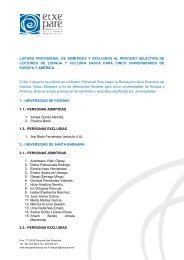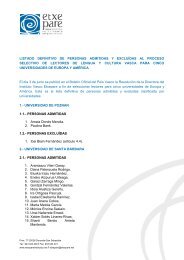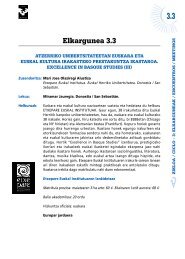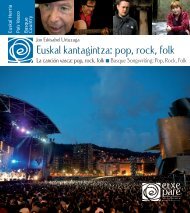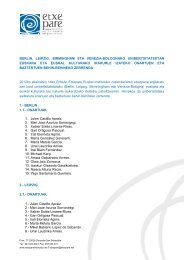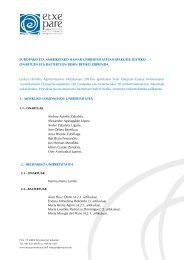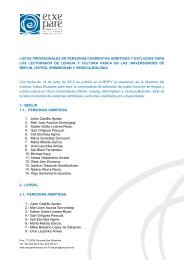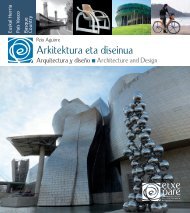Euskal dantza - Etxepare, Euskal Institutua
Euskal dantza - Etxepare, Euskal Institutua
Euskal dantza - Etxepare, Euskal Institutua
You also want an ePaper? Increase the reach of your titles
YUMPU automatically turns print PDFs into web optimized ePapers that Google loves.
una gran familia de danzas, música, fiestas y tradicionesque abarca todo el occidente europeo. Comparmosuna amplia y rica cultura tradicional, aunmanteniendo las caracteríscas propias de cada unade ellas. En el caso de las danzas vascas, muchas desus caracteríscas disnvas se reforzaron mucho enel siglo XX, hasta el punto de llegar a creer que sontotalmente diferentes.Con la influencia del romancismo y del nacionalismo,en los úlmos cien años ha crecido el interés porla cultura tradicional y se han llevado a cabo numerosasiniciavas en defensa del folclore. Las danzasvascas han sido resucitadas, enterradas, transformadas,rehechas, recuperadas y reinventadas una y otravez. En una sociedad mediáca y globalizada, bajo elinflujo de modas y complejas periferias, prevalecenlas fuerzas igualadoras y homogeneizantes. Anteponiéndosea dichas tendencias, las diferencias, lasmarcas disnvas, se han converdo en referentesidentarios. Las danzas tradicionales han hecho suyala función de representar las diferentes idendadesde los pueblos. Nos maravilla el arrebato de la novedad,pero siempre volvemos a las raíces en busca delas caracteríscas que nos disngan dentro del marde la uniformidad.even though there are specific features as well. Someof these parcularies acquired a growing importancein Basque dance during the tweneth centuryand, consequently, we began to believe that we werequite different.Influenced by Romancism and naonalism, and followinga new interest in tradional culture, manyessays have been published in defence of folkloreduring the last hundred years. Basque dances havebeen resurrected, buried, transformed, reconstructed,recovered and reconfigured me and me again.In a globalised media society influenced by complextrends and peripheries, levelling and homogenizingforces now dominate. In the face of such forces, differenceand disncveness have become pillars ofdefending identy. Tradional dances have takenon the funcon of represenng peoples’ differentidenes. The shock of the new fascinates us, yetwe return to our roots over and over again in searchof features that will separate us from the sea of uniformity.11



